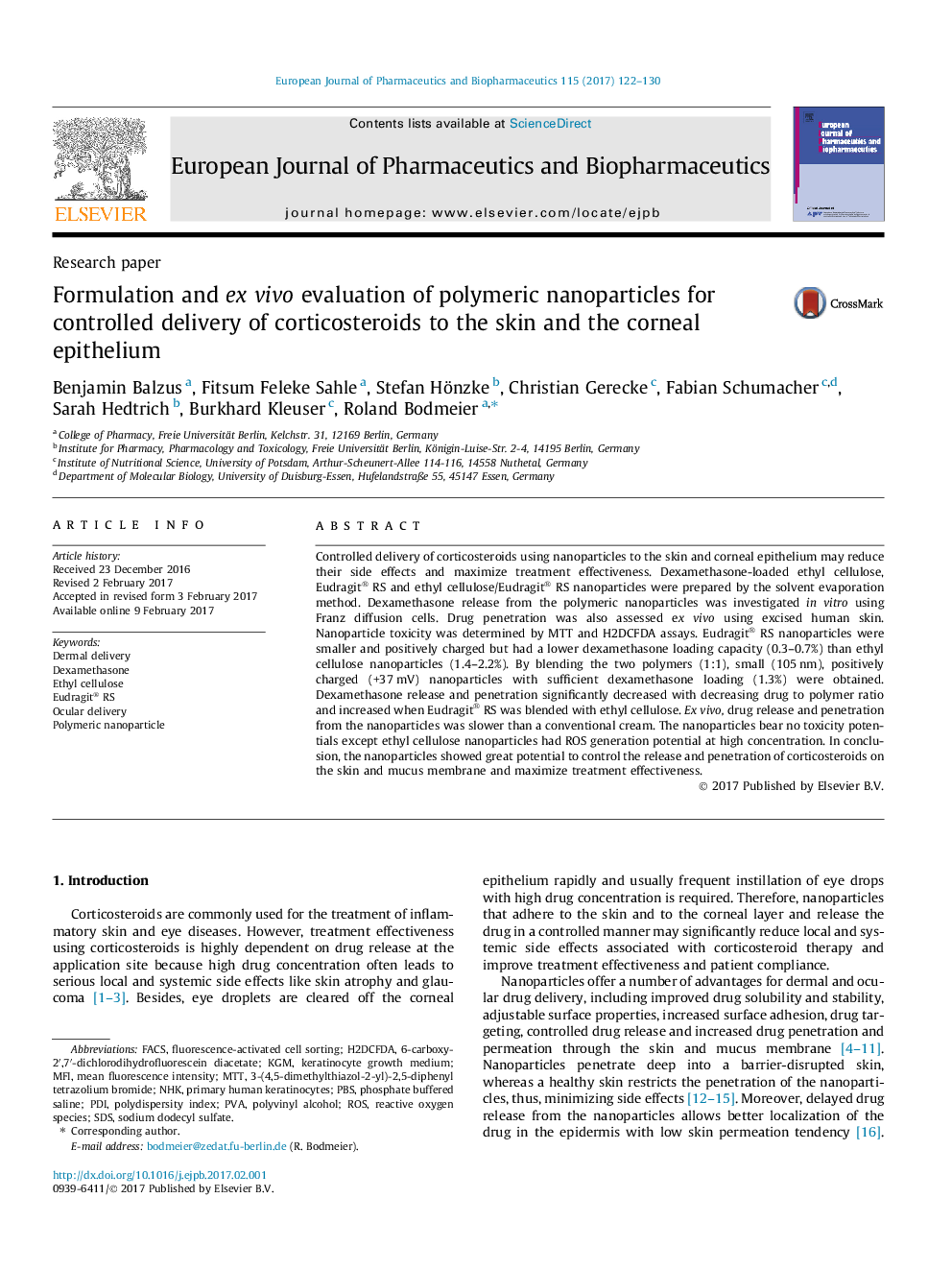| Article ID | Journal | Published Year | Pages | File Type |
|---|---|---|---|---|
| 5521572 | European Journal of Pharmaceutics and Biopharmaceutics | 2017 | 9 Pages |
Controlled delivery of corticosteroids using nanoparticles to the skin and corneal epithelium may reduce their side effects and maximize treatment effectiveness. Dexamethasone-loaded ethyl cellulose, Eudragit® RS and ethyl cellulose/Eudragit® RS nanoparticles were prepared by the solvent evaporation method. Dexamethasone release from the polymeric nanoparticles was investigated in vitro using Franz diffusion cells. Drug penetration was also assessed ex vivo using excised human skin. Nanoparticle toxicity was determined by MTT and H2DCFDA assays. Eudragit® RS nanoparticles were smaller and positively charged but had a lower dexamethasone loading capacity (0.3-0.7%) than ethyl cellulose nanoparticles (1.4-2.2%). By blending the two polymers (1:1), small (105Â nm), positively charged (+37Â mV) nanoparticles with sufficient dexamethasone loading (1.3%) were obtained. Dexamethasone release and penetration significantly decreased with decreasing drug to polymer ratio and increased when Eudragit® RS was blended with ethyl cellulose. Ex vivo, drug release and penetration from the nanoparticles was slower than a conventional cream. The nanoparticles bear no toxicity potentials except ethyl cellulose nanoparticles had ROS generation potential at high concentration. In conclusion, the nanoparticles showed great potential to control the release and penetration of corticosteroids on the skin and mucus membrane and maximize treatment effectiveness.
Graphical abstractDownload high-res image (218KB)Download full-size image
